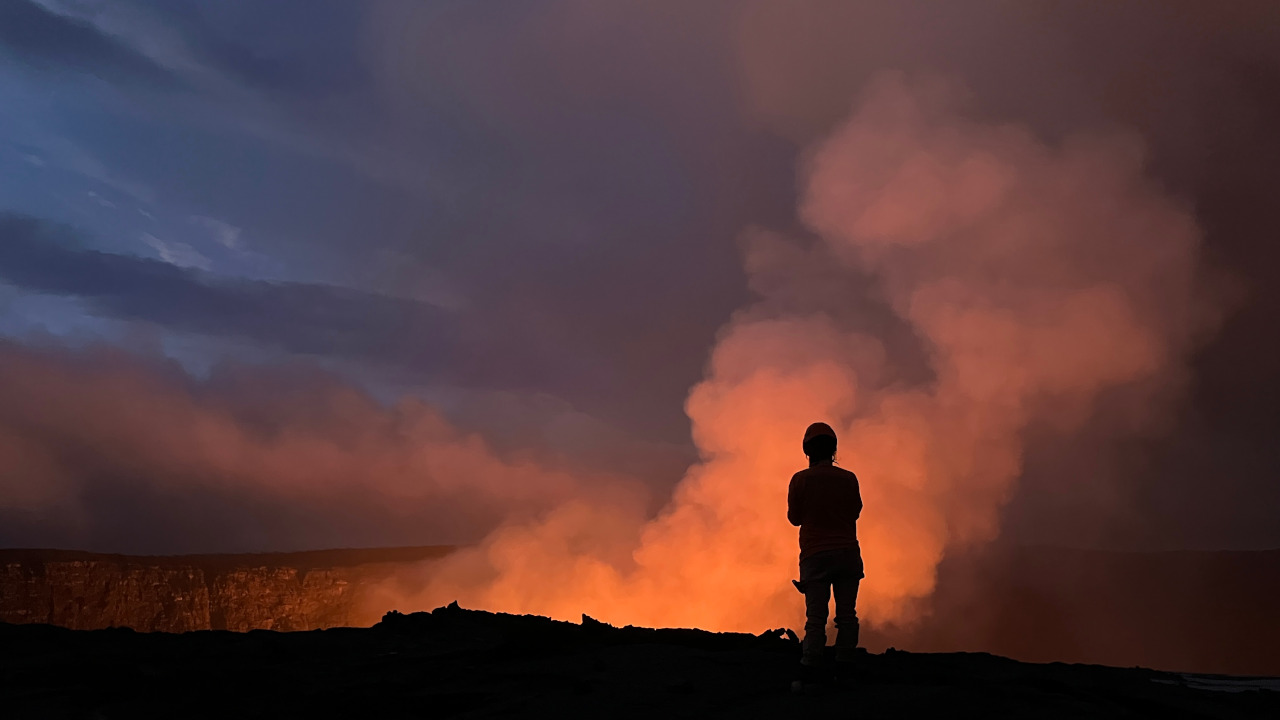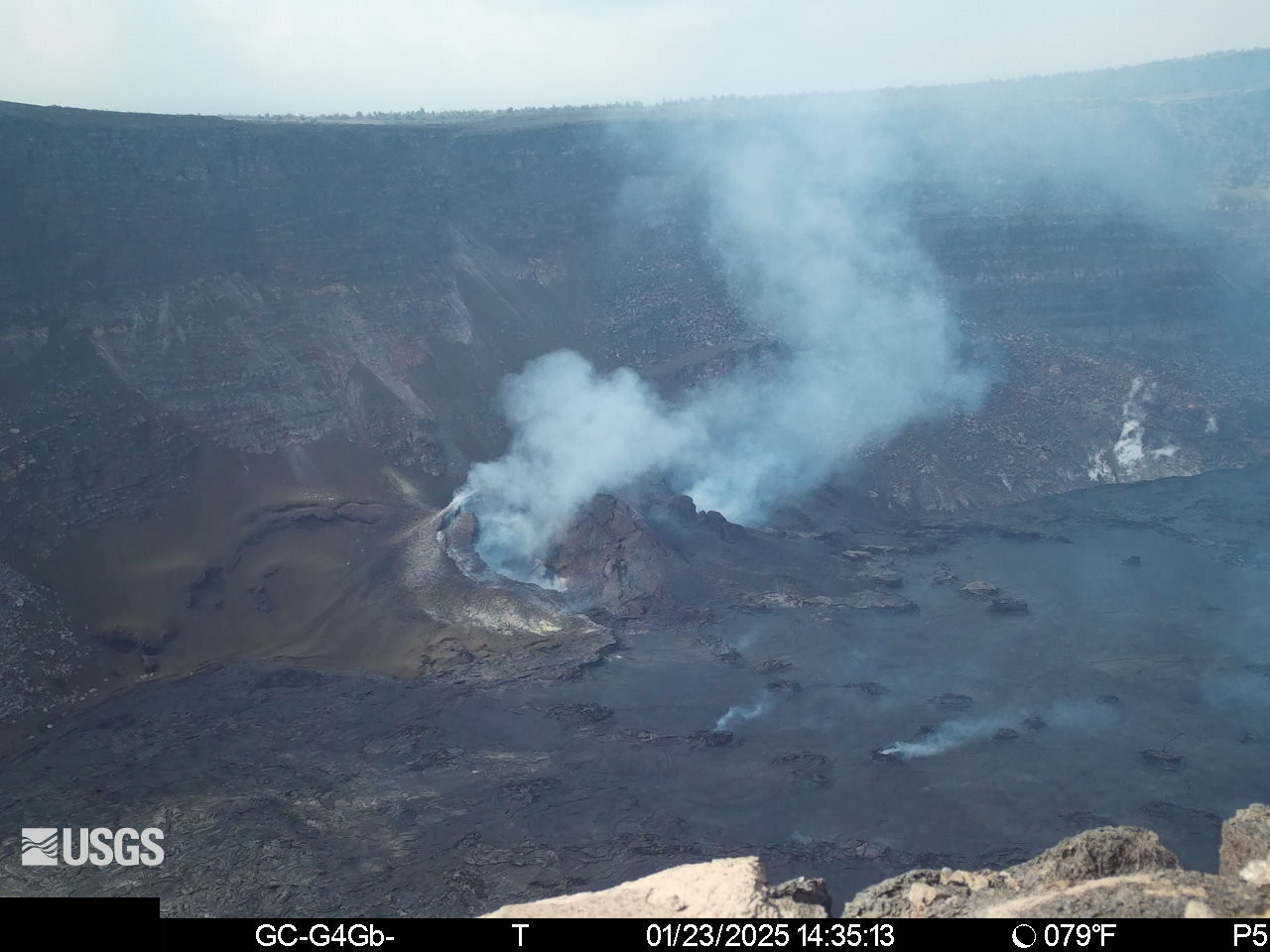(BIVN) – Almost as quickly as the 5th episode of the ongoing Kilauea summit eruption started, it has stopped.
Fountain activity ceased about 4:30 a.m. Thursday, along with the end of lava effusion from the vent.
“The 5th episode began at 2:30 p.m. HST January 22 and continued overnight with fountaining to 30-50 m height and Pele’s hair observed at the Steaming bluff car park,” the USGS Hawaiian Volcano Observatory wrote on Thursday. “The 5th episode activity was accompanied by tremor on seismometers, deflation on near vent tiltmeters and gas discharge estimated at greater than 10000 tonnes per day.”
As has been the case previous episodes in this eruption, strong glow continues from the north vent, indicating magma remains close to the surface.
From the USGS Hawaiian Volcano Observatory on Thursday morning:
Summit Eruption Observations: The Halemaʻumaʻu eruption that began its fifth episode on January 22nd at 2:29 HST which lasted until about 4:30 HST on the 23rd. Fountains fed a lava flow that spread over about one half of the floor of Halemaʻumaʻu crater. Since then, strong glow has continued. Pele’s hair was observed at the steaming bluff carpark overnight and may continue to be remobilized by winds within the National Park and in nearby communities over the next few days.
Summit Instrumental Observations: Seismic tremor is currently present at low levels. Earthquake activity well below background (one earthquake detected overnight) has been detected in the summit region. Summit tiltmeters showed the onset of a new inflation cycle at about 4:30 HST consistent with the end of fountaining. Tilt increased about 0.2 microradians over the past 2 hours. The most recently measured sulfur dioxide (SO2) emission rate was approximately 10000 tonnes per day at the start of episode 5. Though significantly lower than rates measured during eruptive episodes 1, 2, and 3 (Kona winds precluded emission rate measurements during episode 4), this value still represents above-background SO2 emissions, and the resulting hazard will be affected by wind conditions.
Rift Zone Observations: Seismicity remains low in both the East Rift Zone and Southwest Rift Zone, with counts of shallow earthquakes at background levels. The ESC tiltmeter in the upper East Rift Zone has recorded minor deformation in the last 24 hours. Deformation rates remain low in the middle and lower East Rift Zone and in the Southwest Rift Zone, as recorded by GPS instruments and tiltmeters.
Analysis: The current eruption at the summit of Kīlauea is the sixth eruption since 2020 within Halema’uma’u crater, which sits inside the southern part of Kaluapele. The recent summit eruptions have lasted from one week to more than a year. Like most of the other eruptions, this event began with vigorous lava effusion and volcanic gas emissions from an initial fissure system. The current eruption is marked by episodic fountaining not seen in any of the other eruptions. There have been four fountaining episodes to date lasting from a few hours to over a week. The onset of fountaining of each episode is accompanied by strong deflation of the summit region. Pauses or periods of repose between all of the fountaining episodes are marked by an immediate change from deflation to inflation of the summit as magma recharge repressurizes the magma chamber. The prior five episodes all began after the Uēkahuna tiltmeter recorded between 6 and 12 microradians of inflationary tilt. The Uēkahuna tiltmeter has recorded about .2-.3 microradians in the 3 hours since episode 5 ended. If this rapid rate of recovery continues, it is possible for another episode to begin as early as the next 3-4 days, but more time is needed to accurately estimate a probability window. The probable window of time for the start of the next episode is based upon behavior prior to previous episodes and could be longer if the inflation rate slows or more pressure is required to initiate the next eruptive episode.



by Big Island Video News3:02 pm
on at
STORY SUMMARY
HAWAIʻI VOLCANOES NATIONAL PARK - The summit fountain activity stopped suddenly at about 4:30 a.m. Thursday morning, along with the end of lava effusion from the vent.